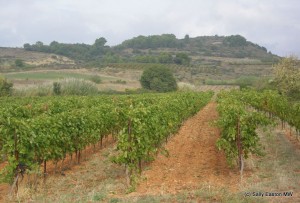Languedoc rising

Picturesque Languedoc
A version of this article first appeared in Winestate magazine, May/June 2013.
The fortunes of Languedoc, in southern France, could be on the up again. Laurent Delaunay of Abbots and Delaunay, expressed hesitant hope for the economic situation of the region. The value of vineyard land has rebounded from the burst investment bubble of the mid 1990s, when foreigners as well as people who’d made money outside the wine industry were investing in the region. Californian Robert Mondavi visited the Languedoc in 1996, wanting to invest. His bid to buy vineyard land near the famed domaine Mas de Daumas Gassac collapsed at the turn of the millennium. Also in the 1990s, two of the then big Australian producers, BRL Hardy (now Accolade) and Southcorp (now Treasury Wine Estates), had invested in the region. Hardy’s owned Domaine de la Baume from the early 1990s; Southcorp had a joint venture with Val d’Orbieu, one the big co-operatives in the region. And it was in 2007 that French company Bonfils bought the James Herrick brand and its 180 hectares of vineyard from another Aussie previous investor, Foster’s (now Treasury Wine Estates).
Delaunay, who himself migrated south from his native Burgundy in 1993 explained the history, saying “in the early 1990s there was a renaissance in Languedoc. Languedoc was welcoming winemakers from other regions. Burgundy was expensive, so I worked as a flying winemaker [in Languedoc] to begin with.” Prices for land increased during the 90s, but, Delaunay said “by the early 2000s it all collapsed. These people had been dreaming; they were not making money after five to ten years. Some lost a lot of money.”
Now, he said, another decade on, is an interesting time for the Languedoc. While the costs of production are not so great, the main challenge to making a profit is the low retail prices for Languedoc wine. He said “a lot of people are still struggling, but the balance is a bit better, and prices have gone up a little in the last few years.” One of the things that makes the area interesting for Delaunay is the “huge potential in terms of quality.” And it’s the mid-sized players, including his own company and the likes of Gerard Bertrand and Paul Mas, he said “who have a quality approach.”
Niche producers, making hand-crafted, high quality, artisanal wines are going to find niche markets wherever they come from. In the Languedoc these include the small estates, up to around 10 hectares where the owners do everything. They’re interesting because they’re making top quality wine. They’re also likely to be within the appellations (the likes of St Chinian, Faugeres, Corbières, Minervois etc).
But the appellations account for only around 15% of the greater Languedoc vineyard, which is France’s biggest vineyard area with something in the region of 225,000 hectares dispersed over a huge region (Australia’s total vineyard is around 160,000 ha). For the non-appellation territories, Delaunay, who operates in both, believes the future of the Languedoc is “50 to 120 hectare, well-equipped, mechanised properties making good quality, mostly varietal wine.”
That two of the region’s biggest co-operatives have merged recently suggests there is still much to change structurally in the Languedoc. But in terms of finding tasty wines, things have arguably never been better.



